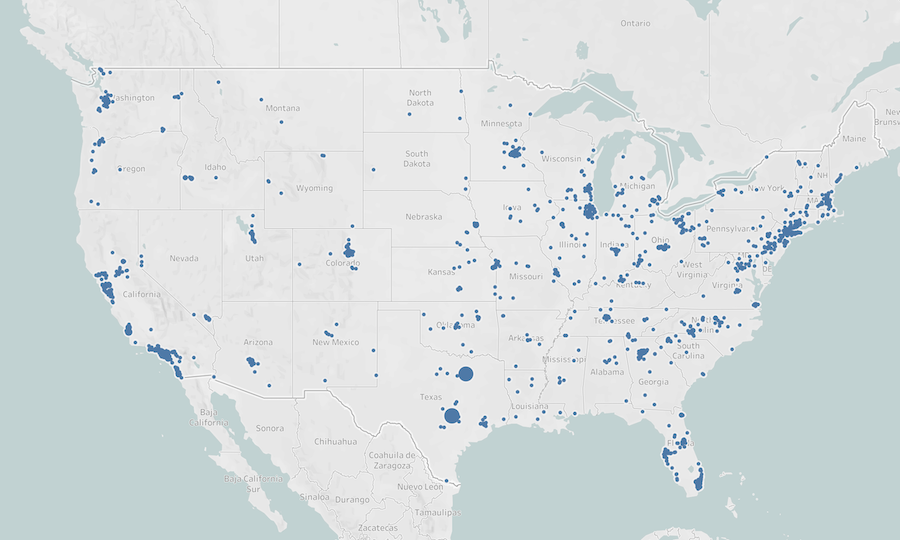While the first batch of single local rate collections have not yet been disbursed (that will come later this month), the Comptroller has released a list of all taxpayers that have registered under the new program. Since these taxpayers won't show up in the Confidential Information Reports, we thought it might be interesting to see where they're located.
If you're interested in how we did this, just keep reading to the end!
Of the 1,473 registered taxpayers, 1,414 had valid, geocodable addresses. Not surprisingly, nearly 33% of these new taxpayers are located in California, New York, and Florida, three of the most heavily populated states. Twenty states have fewer than 10 registered single local taxpayers (so far).
This is actually a somewhat interesting case study in some of the things we have to do to clean data from the Comptroller. Four percent of these new taxpayers did not fill out a complete address when registering. For example, Bien Air USA, Inc, a taxpayer with ID 11332868899, did not include a state or ZIP code. This is not the first time we've seen poorly submitted addresses in the state's sales tax data. My personal favorite address was "1/2 Mile North of FM 73"... how that slips through the application process is beyond me, but suffice it to say it's extremely difficult to geocode an address like that.
The second interesting thing is that 85 taxpayers with Texas addresses are included in the dataset, even though the Comptroller clearly states that "[b]usinesses located in Texas are not remote sellers and cannot use the single local use tax rate for sales."
You can view the full visualization here.
How we created this visualization
The Comptroller's Single Local Rate Taxpayer Search is located here. After downloading the full list in CSV format, we wrote a quick script that uses our Texas Comptroller PHP package to loop through each taxpayer and fetch their sales tax permit information, including the registered business address.
Once we had the business address, we ran a bulk geocoding using Geocodio, which offers a free plan that was more than sufficient to handle the 1400+ records. If you wish, you can also append additional information such as Census block, congressional district, etc., and do even more analysis.
With the latitude and longitude now appended to each taxpayer, we imported the dataset into Tableau Public. We use Tableau for a lot of internal data exploration and analysis. While it's not exactly the most beautiful visualization you'll ever see, it was sufficient for our needs (which was just to see where everyone is located). Tableau Public allows you to publish your datasets. If you have any public data that you've been analyzing for your city, it's a great free way to share that analysis with the world!
